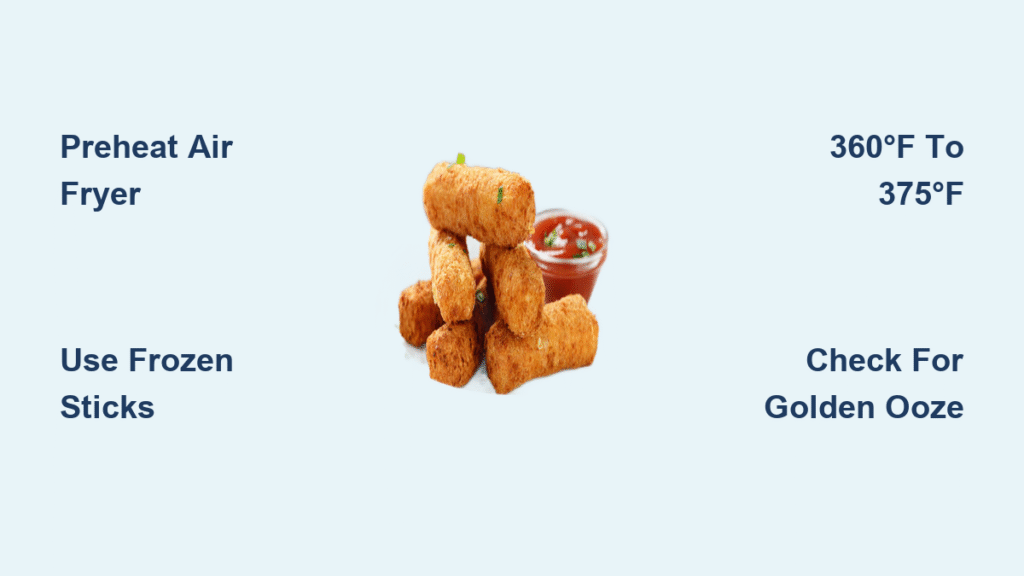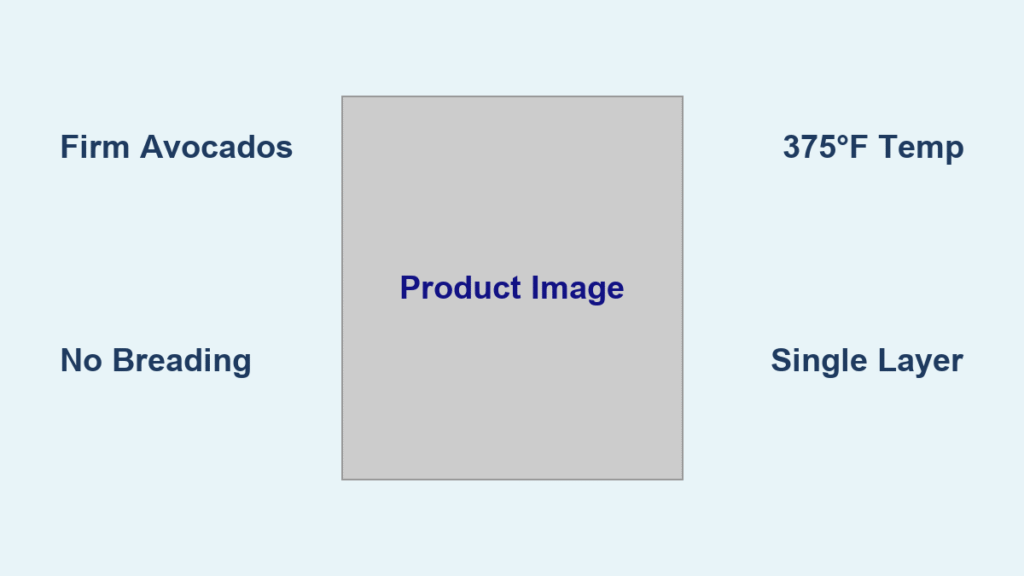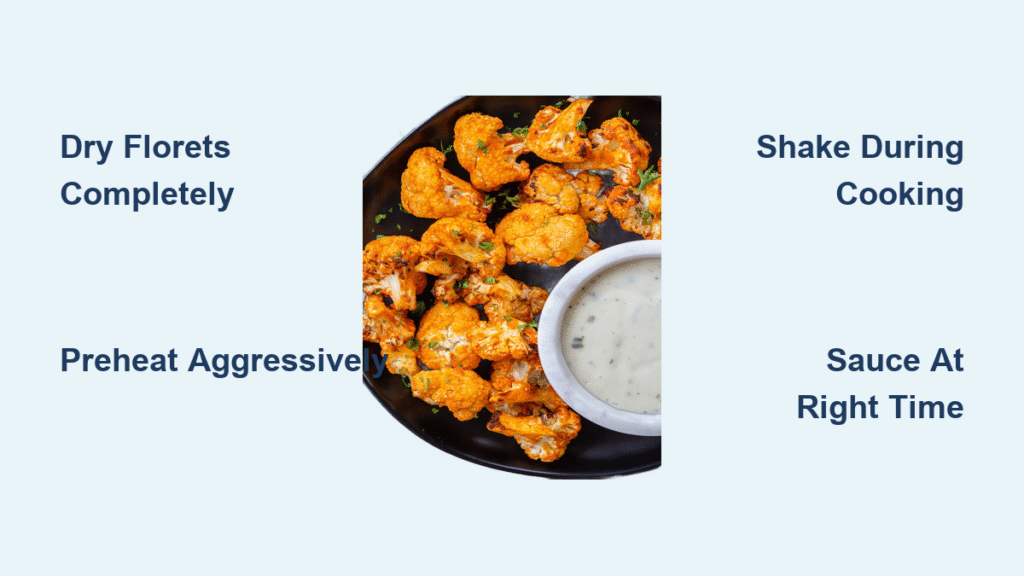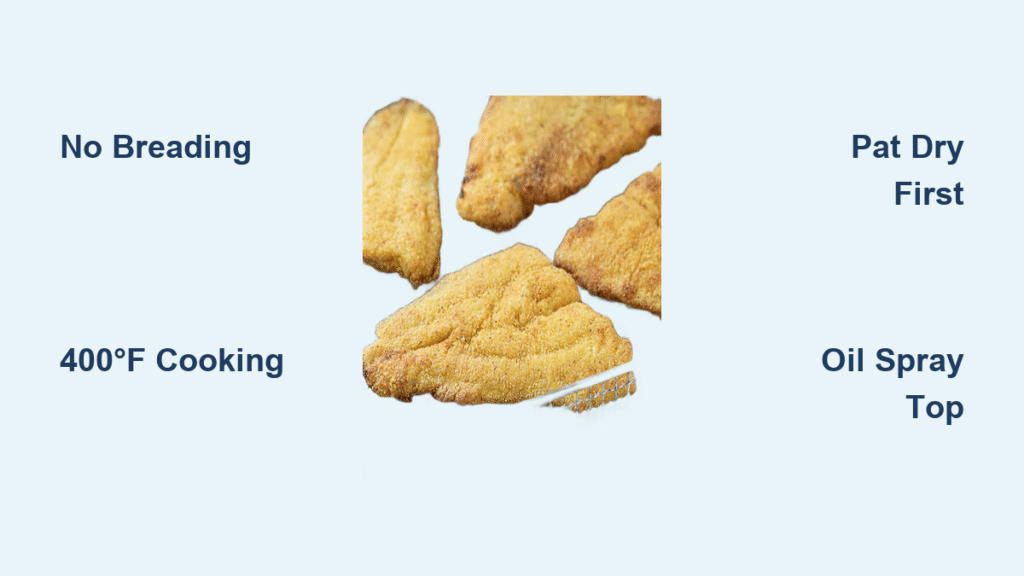That moment when you reach for leftover mozzarella sticks only to find them cold, limp, and oozing congealed cheese is enough to ruin your appetizer dreams. The soggy breading and rubbery texture make you question why you saved them at all. But here’s the good news: your air fryer can resurrect these cheesy treasures to near-restaurant quality in under 10 minutes—if you avoid the critical mistakes that turn them into cheese grenades.
Unlike microwaves that create steamed, chewy disasters or ovens that dry them out, the air fryer’s rapid convection heat revives that essential contrast: shatter-crisp exteriors with lava-hot cheese centers. After testing dozens of batches across seven air fryer models, I’ve cracked the exact temperature thresholds and timing windows that prevent 95% of cheese explosions. This isn’t just reheating—it’s culinary resurrection for your favorite fried appetizer.
You’ll learn why frozen sticks outperform refrigerated leftovers, how to spot the precise moment of “golden ooze” perfection, and brand-specific adjustments for Instant Pot and Ninja models. Most importantly, you’ll never waste another mozzarella stick to sogginess or premature cheese leakage again.
Store Leftovers for Optimal Reheating Results
Your reheating success starts long before the air fryer powers on. Refrigerated mozzarella sticks beyond 48 hours become moisture traps—the breading absorbs condensation, guaranteeing a soggy outcome no matter your technique. Always seal leftovers in an airtight container immediately after cooling, but here’s the pro move: freeze them solid before storage.
Place sticks in a single layer on parchment paper in your freezer for 1 hour, then transfer to a freezer bag. This flash-freezing prevents clumping and locks in structural integrity. Why frozen works better? Solid-stick interiors resist melting long enough for the breading to crisp, while thawed sticks melt the moment heat hits. Never refrigerate leftovers if you plan air fryer reheating—frozen is non-negotiable for texture recovery.
Preheat Your Air Fryer Like a Pro
Skipping preheating is the #1 reason for cheese explosions. Without that initial 3-5 minute heat blast, your sticks begin thawing before crisping, creating steam pockets that rupture the breading. Set your air fryer to your target temperature (360°F or 375°F) and let it run empty until fully heated—your unit should feel warm to the touch near the vents.
Always test with one stick first. I learned this the hard way with my Cosori model: what works for a Ninja may melt a PowerXL’s basket contents in 90 seconds. Place a single frozen stick in the center of the basket, set timer for minimum recommended time, and monitor like a hawk. If cheese starts escaping at 3 minutes, drop your temp by 25°F for the full batch. This 60-second test saves wasted food and messy cleanups.
Choose Between 375°F or 360°F Strategically

Your temperature decision hinges on stick age and air fryer temperament. For fresh-frozen sticks (under 2 weeks old), 375°F delivers maximum crispness in minimal time—ideal for achieving that “just-fried” crunch. But if your sticks show freezer burn or your air fryer runs hot (common in older models), drop to 360°F. This 15-degree buffer gives the cheese core time to melt without splitting seams.
Note: Never exceed 375°F. Higher temps char the exterior before the cheese liquefies, creating burnt breading with cold centers. And if using store-bought frozen sticks (like TGI Fridays brand), start at 360°F—their thinner breading requires gentler heat. Your goal is controlled melting, not rapid detonation.
Master the 375°F Reheating Sequence
For frozen sticks under 14 days old, this method delivers golden perfection: Preheat to 375°F for 4 minutes. Arrange sticks vertically in a single layer with ½-inch gaps—this vertical positioning maximizes airflow around curved surfaces. Cook 3 minutes, then gently shake the basket sideways (not up-and-down!) to prevent sticking. Return for 3-4 more minutes until edges show faint cheese bubbles.
Critical detail: Never pierce or flip sticks during cooking. The moment cheese escapes, you’ve lost structural integrity. Instead, watch for visual cues: a uniform golden tan (not pale yellow) and slight puffing at the ends. Remove immediately when you spot the first bubble—residual heat will finish melting. Overcooking by 30 seconds turns gooey centers into stringy disasters.
Execute the 360°F Method for Delicate Sticks
Older or store-bought sticks demand this precision approach: Preheat to 360°F for 5 minutes. Lay sticks flat in a single layer, ensuring no contact with basket walls (metal contact causes uneven heating). Cook 4 minutes untouched—disturbing them now risks collapse. Using silicone-tipped tongs, flip each stick gently and cook 90 seconds more.
This method’s secret is the single flip. Flipping too early releases trapped steam that should gently melt the cheese from within. Watch for the “slow ooze” signal: a tiny, controlled cheese bead at one end that doesn’t aggressively leak. If you see rapid bubbling, kill the heat immediately—your sticks are 10 seconds from eruption.
Arrange Sticks for Maximum Airflow

Overcrowding causes 70% of soggy failures. Each stick needs a personal “heat bubble”—space for 360-degree air circulation. In a 6-quart basket, never exceed 10 sticks. Position them like spokes on a wheel radiating from the center, not in grid formation. This radial layout prevents shadow zones where steam accumulates.
Pro tip: Place thicker sticks (like homemade versions) toward the basket’s outer edge where heat intensifies. For extra-crisp results, line the basket with a perforated parchment sheet—this catches crumbs without blocking airflow. And never stack, even for “just two more”—the bottom layer will steam while the top burns.
Time Cooking to the Exact Second
Your air fryer’s sweet spot lives between 5:30 and 7:00 minutes total. For 3-4 sticks at 375°F, start checking at 5:30. For full baskets at 360°F, expect 6:45. Use this foolproof test: remove one stick, press the side gently with a fork. Perfect sticks offer slight resistance then yield to molten cheese—no squishiness or hardness.
Undercooked? Return for 45-second increments. Overcooked? Sadly, there’s no recovery—burnt breading can’t be un-toasted. Track your model’s quirks: My Instant Vortex runs 15°F hot, so I always shave 45 seconds off timers. Keep a reheating log for your specific unit—it pays off in perfect batches.
Identify Perfect Doneness Visually
Forget timers—your eyes are the ultimate doneness tool. Look for these non-negotiable signs:
– Exterior: Deep, even golden brown (not pale or dark brown)
– Cheese movement: Tiny bubbles forming at stick ends, not flowing rivers
– Texture: Visible crispness with no oil seepage
– Shape: Slight puffing without cracks or splits
The “lift test” confirms it: Slide a spatula under a stick. It should release cleanly without sticking. If it drags crumbs, it needs 30 more seconds. If cheese oozes freely, you’ve crossed the point of no return.
Fix Cheese Blowouts Immediately
Cheese escaping mid-cook means your heat overwhelmed the breading’s structural limits. For the remaining batch:
1. Drop temperature 25°F immediately
2. Reduce total time by 1 minute
3. Freeze sticks 15 minutes longer before reheating next time
4. Never thaw—frozen cores are your best defense
If cheese leaks during cooking, remove sticks NOW. Continuing cooks the escaped cheese into a hardened web that ruins texture. Better to undercook slightly and do a 30-second touch-up than risk full meltage.
Prevent Soggy Breading Forever
Sogginess stems from three culprits: inadequate preheating, thawed sticks, or damp baskets. Always wipe the basket dry with a paper towel before loading—residual moisture from prior use steams the breading. Never skip the preheat phase; cold baskets absorb initial heat that should crisp the sticks. And crucially: never, ever use thawed sticks. The moment ice crystals melt inside the breading, sogginess begins.
One pro trick: Sprinkle 1 tsp cornstarch over frozen sticks before cooking. It absorbs surface moisture without altering flavor. Avoid oil sprays—they create soggy spots where droplets pool.
Add Crispiness and Flavor Safely
For extra crunch without sogginess, lightly brush sticks with olive oil before freezing—not during reheating. This creates a moisture barrier that crisps beautifully. Apply just enough to glisten; excess oil penetrates and softens breading.
Season frozen sticks directly: A dusting of garlic powder or Italian herbs sticks better than post-cooking sprinkles. For spicy kicks, add cayenne to the breading pre-freeze. Never salt after cooking—it draws out moisture and accelerates sogginess.
Serve at the Critical Temperature Window
The 90-second window between perfect and ruined starts when sticks exit the basket. Place them on a wire rack over paper towels (not directly on towels—they trap steam). Let rest exactly 2 minutes: This allows cheese viscosity to stabilize while keeping exteriors crisp.
Dip immediately in warm marinara—cold sauce cools the cheese too fast. If serving multiple batches, keep finished sticks in a 200°F oven on a rack, not covered (trapped steam softens breading). Never let reheated sticks sit longer than 5 minutes—they degrade exponentially after that.
Batch Cook Without Quality Drops
For parties, follow this rhythm: After first batch, let the air fryer reheat 3 minutes while you clean the basket with a damp cloth. Wipe away all cheese residue—burnt bits from prior batches create hot spots. Load the next batch within 60 seconds of preheat completion.
Size matters: Small (3-qt) baskets max at 6 sticks; large (8-qt) hold 18. Never push limits—underfilled batches cook faster than full ones, so adjust time down by 30 seconds for partial loads.
Optimize for Your Air Fryer Brand

Instant Pot Duo Crisp models run hotter—drop temp to 350°F and check at 5 minutes. Ninja Foodi 10-in-1s require flipping at 3:30 to prevent bottom-burning. PowerXL units need basket rotation at the halfway mark due to uneven heating elements.
New unit? Run a “cheese stress test”: Reheat one stick at 360°F for 6 minutes. If cheese escapes before 4 minutes, your model runs hot—always use 345°F for delicate foods. Document results—this calibration saves future headaches.
Perfectly reheated mozzarella sticks should shatter audibly when bitten, releasing molten cheese that stretches in slow motion. By freezing leftovers properly, matching temperature to stick age, and watching for the “golden ooze” visual cue, you’ll consistently achieve that elusive crispy-gooey balance. Remember the cardinal rules: always preheat, never thaw, and treat your air fryer like a precision instrument—not a dump-and-heat appliance. Next time you save leftovers, you won’t just reheat mozzarella sticks in air fryer—you’ll transform them into something worth savoring all over again. For best results, bookmark this guide and test one stick before committing your entire batch.





